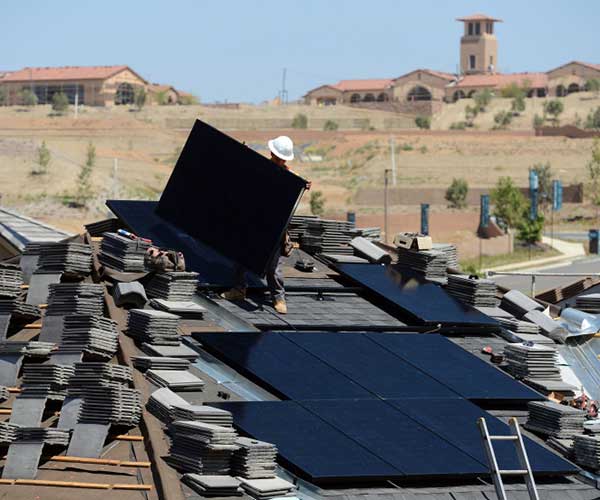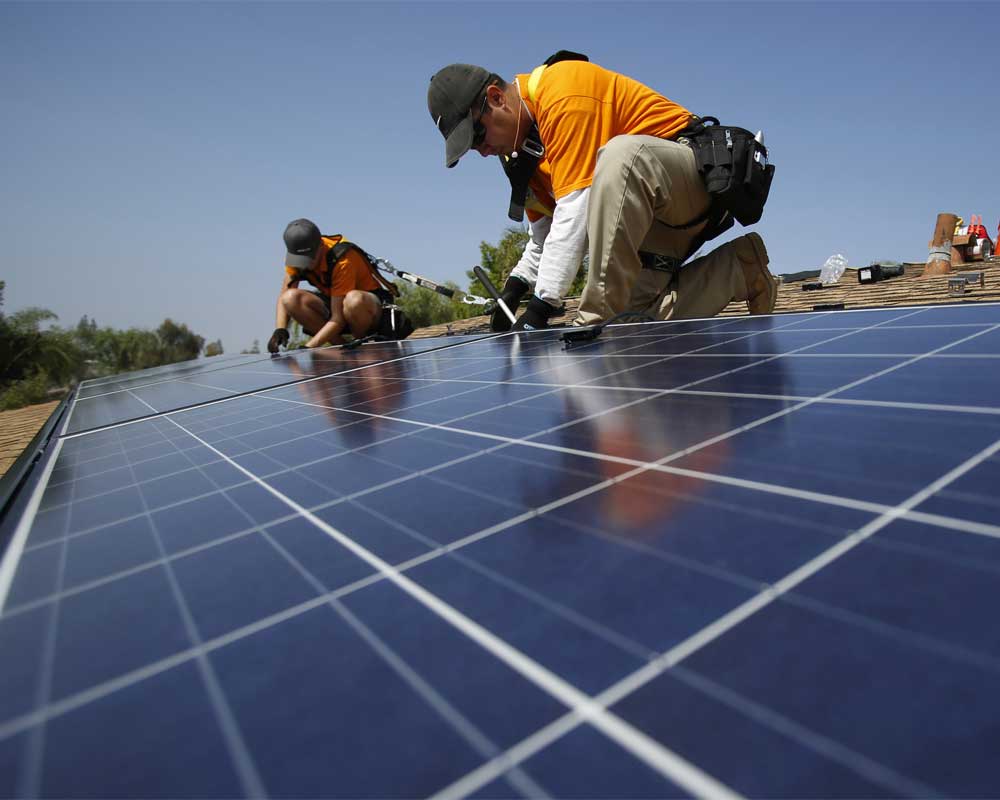The solar industry is the largest renewable energy employer in the U.S. and the second largest energy employer behind the oil and gas industry.
Wind and coal trail far behind solar in terms of the number of people employed. For comparison, coal mining lost 2,000 jobs between 2016 and 2017, although that industry employs only slightly more than 50,000 people.
The Solar Foundation, a nonprofit that advocates for solar power, released the National Solar Jobs Census—and the findings were discouraging.
The report concluded that the U.S. solar industry employs 242,343 workers as of 2018, a decline of nearly 8,000 jobs (3.2 percent) compared to 2017.
The decline marks a setback for an industry that nearly tripled its workforce in the seven years since the Solar Foundation issued its first National Solar Jobs Census in 2010. U.S. solar employment peaked at roughly 260,000 in 2016.

Green jobs are changing the energy market, and green technologies are reshaping how the energy sector does business, recruitment and training /Stock Image
“Despite two challenging years, the long-term outlook for this industry remains positive as even more Americans turn to low-cost solar energy and storage solutions to power their homes and businesses,” Andrea Luecke, president, and executive director at The Solar Foundation said in a press release. “However, it will take exceptional leadership at the federal, state, and local levels to spur this growth and address the urgent challenge of climate change. Expanding solar energy and storage across America will create high-quality jobs, reduce carbon emissions, boost local economies, and build resilient and adaptive communities.”
Nationwide, the 2018 jobs decline reflects a slowdown in installed solar capacity.
Solar companies delayed many utility-scale projects in late 2017 while awaiting the outcome of a petition for new tariffs on solar panels and cells. These delays led to reduced capacity growth and fewer jobs in the first three quarters of 2018.
At the state level, policy challenges and a difficult business climate contributed to lower jobs numbers in some states with established solar markets. In other states, supportive policies and the rapidly declining cost of solar technologies helped drive an increase in employment in 2018.
States hit hardest by the slowdown were some of those with well-established solar industries, including California, with almost 10,000 job losses, Massachusetts, North Carolina and Arizona, while 29 states – many with less established solar penetration, including Florida, Texas and Illinois – continued to see job growth.
“It’s an optimistic report despite the fact we’re seeing job declines over the past two years,” said Andrea Luecke, CEO of The Solar Foundation. “That’s because the macro-picture since we first started tracking solar jobs in 2010 has exploded.”

High atop a new house in KB Home’s Terramore development in Riverside County, a SunPower worker readies another solar panel for installation /Photo by Will Lester- The Press-Enterprise/SCNG
In terms of detailed overall solar penetration, California remains in first place, with about 40 percent of U.S. solar capacity and still has by far the most jobs nationwide. Florida now ranks second to California in total solar jobs, having overtaken Massachusetts.
According to Luecke, the long-term prospects for the solar industry remain “extremely bright” in the U.S. and globally. Jobs growth remains positive, having added 100,000 jobs, an increase of roughly 70 percent over the past five years. By comparison, U.S. employment as a whole has only grown 9.13 percent over the same period.
Despite the lack of support shown to the solar industry by the Trump presidency, only the oil/ petroleum and natural gas industries in the energy sector have more employment than solar.
The contraction of the U.S. solar industry comes at a time when scientists around the globe are calling for an immediate reduction in carbon emissions.
A recent report from the Intergovernmental Panel on Climate Change called for massive worldwide efforts to prevent the global temperature from rising 1.5 degrees Celsius, at which point the effects of climate change will be devastating and, in many cases, irreversible. After three consecutive years of cutting its carbon emissions, the U.S. increased emissions by 2.5 percent in 2018.













Comments